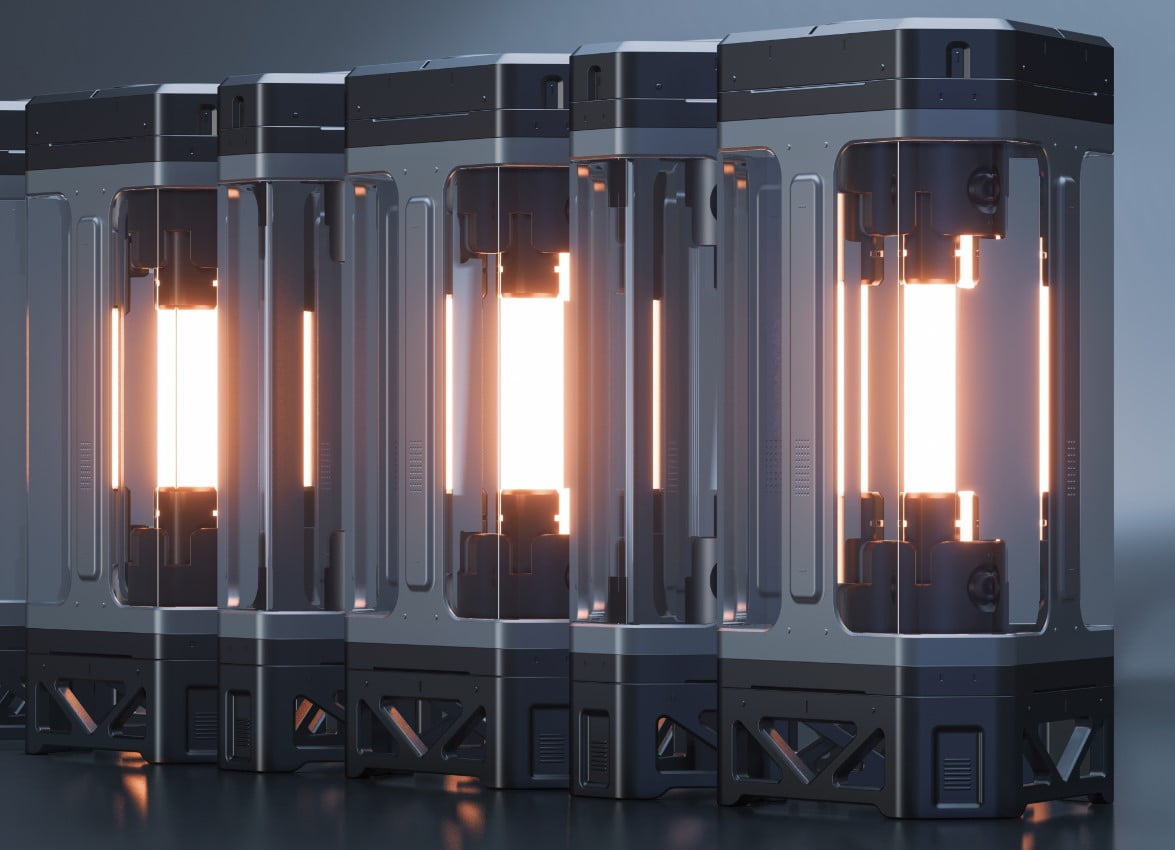Quantum Leaps in Battery Tech: Where Qubits and Kilowatts Converge
In the realm of computational science, quantum computing stands as a groundbreaking innovation, promising to redefine the boundaries of problem-solving and data analysis. Unlike classical computing, which relies on bits, quantum computing uses quantum bits or “qubits,” offering exponentially faster computational capabilities.

The significance of this technology becomes even more pronounced when applied to Quantum Computing and Battery Technology — a sector experiencing a meteoric rise in global demand.
According to a joint 2019 report by McKinsey and the Global Battery Alliance, the global demand for lithium-ion batteries is expected to soar from approximately 700 GWh in 2022 to around 4.7 TWh by 2030. This surge is primarily fueled by the electrification of mobility and the broader transition to sustainable energy. In fact, batteries for mobility applications like electric vehicles will constitute about 4,300 GWh of the demand by 2030.
For energy storage batteries, the market size was USD 10.88 billion in 2022 and is projected to reach USD 31.20 billion by 2029. Another report estimates the Global Battery Energy Storage Systems Market to rise from US$4.7 Billion in 2022 to an impressive US$34.1 Billion by 2030. Bloomberg further predicts that by 2030, the demand for lithium-ion battery capacity will escalate to 9,300 GWh globally.
Below, we delve into the real-world applications of quantum computing in optimizing battery technology, offering insights into how this revolutionary approach could lead to more efficient, safer, and longer-lasting batteries.
The Quantum Computing Landscape
Quantum computing is a multifaceted field characterized by various approaches to harnessing the power of quantum mechanics. The primary types of quantum computing include superconducting circuits, quantum annealing, and trapped ions, among others. Superconducting circuits leverage the quantum properties of superconducting materials to create qubits, while quantum annealing focuses on solving optimization problems by finding the lowest energy state of a system. Trapped ions, conversely, use individual ions as qubits held in place by electromagnetic fields.

Central to the functioning of any quantum computer is the concept of a “qubit” or quantum bit. Unlike classical bits, which can exist in a state of either 0 or 1, qubits can exist in multiple states simultaneously, thanks to the principles of superposition and entanglement. This unique characteristic allows quantum computers to perform complex calculations at speeds unattainable by classical computers, making them particularly well-suited for applications like battery optimization, where rapid, accurate simulations are crucial.
Why Quantum Computing Over Supercomputing in Battery Optimization?
The Limitations of Classical Supercomputing
Classical supercomputers have been the cornerstone for high-performance computing in various scientific and engineering fields. They excel in handling large-scale simulations, data analysis, and complex algorithms. However, classical supercomputers face several limitations when it comes to the intricate world of battery optimization:
- Computational Complexity: The simulation of battery materials involves complex quantum mechanical equations that describe the interactions between atoms and molecules. Solving these equations with classical computing methods is computationally intensive.
- Time Constraints: Even the most advanced supercomputers can take weeks or even months to complete a single simulation, making it impractical for real-world applications where time is of the essence.
- Resource Intensive: The computational load often requires a significant amount of energy, making the process time-consuming and costly.
The Advantages of Quantum Computing
Quantum computing offers a paradigm shift in computational capabilities, which is particularly beneficial for battery optimization.
- Exponential Speedup: Quantum computers can handle multiple states simultaneously, allowing them to perform complex simulations exponentially faster than classical computers.
- High Precision: Qubits enable quantum computers to achieve higher precision in simulations, which is crucial for understanding the subtle interactions in battery materials.
- Resource Efficiency: Quantum computing can perform the same calculations with significantly less energy, making it a more sustainable option.
Comparative Table: Classical Supercomputing vs. Quantum Computing
| Criteria | Classical Supercomputing | Quantum Computing |
| Computational Speed | Slow | Exponentially Faster |
| Precision | Moderate | High |
| Energy Efficiency | Low | High |
| Real-world Applicability | Limited | High |
Pros and Cons
| Computing Type | Pros | Cons |
| Classical Supercomputing | Established, Reliable | Slow, Resource-Intensive |
| Quantum Computing | Exponentially Faster, High Precision, Energy-Efficient | Still in Developmental Stage |
By overcoming the limitations of classical supercomputing, quantum computing emerges as a more efficient and effective tool for battery optimization. Its ability to perform complex simulations in a fraction of the time and with greater accuracy makes it an invaluable asset in the rapid innovation and optimization of battery technology.
Case Study 1: Volkswagen Group and Xanadu Collaboration
The Volkswagen Group, a global leader in the automotive industry, is making significant strides in the electric vehicle (EV) market. However, the company faces substantial challenges in battery technology, particularly in safety, efficiency, and cost-effectiveness. To address these issues, Volkswagen has partnered with Xanadu, a Canadian quantum technology company, to establish a multiyear research program to improve the performance of quantum algorithms for simulating battery materials.
Type of Quantum Computing Used and the Number of Qubits
While the specific type of quantum computing and the number of qubits are not explicitly stated, the collaboration focuses on developing advanced quantum algorithms for simulating battery materials. These algorithms will be processed on Xanadu’s next-generation fault-tolerant quantum computers. The goal is to reduce computational costs and accelerate Volkswagen’s adoption of quantum computing for developing safer, lighter, and more cost-effective battery materials.
R&D or Real-World Problem-Solving?
The program is geared towards real-world problem-solving, focusing on overcoming industry challenges in battery research. Volkswagen and Xanadu have engaged in multi-domain research across material science, computational chemistry, battery technologies, and quantum algorithms. This research sets the foundation for the program’s long-term efforts, aiming to tackle industry challenges by focusing on the development of advanced quantum algorithms for simulating battery materials.
How Has Quantum Computing Made a Difference?
Quantum computing offers a revolutionary approach to material science and optimization, key competencies that Volkswagen aims to grow in its in-house battery expertise. The collaboration aims to unlock the potential of quantum computing for battery development by overcoming technical obstacles in quantum algorithms. This is particularly crucial for understanding the complex chemistry inside a battery cell, thereby aiding in developing more efficient and safer batteries.
The Volkswagen Group, through its collaboration with Xanadu, is leveraging quantum computing to address real-world challenges in battery technology. The initiative is expected to significantly contribute to developing longer-lasting, more efficient, and safer batteries, thereby aligning with Volkswagen’s larger objective of becoming a data and software-driven provider of sustainable mobility.
Case Study 2: Samsung and Honeywell
Samsung, a global leader in consumer electronics, is on a quest to develop better batteries for its range of products, from smartphones to tablets. The company has teamed up with Imperial College London researchers and Honeywell to leverage quantum computing in battery development. The objective is to tackle complex algorithms and simulations that are too challenging for conventional computers.
Type of Quantum Computing Used and the Number of Qubits
Samsung and its partners are using Honeywell’s System Model H1 for their research. This system employs trapped-ion quantum computing and utilizes up to 100 of the more powerful two-qubit gates. These gates are quantum operations handled between two qubits, providing highly accurate results in line with expectations.
R&D or Real-World Problem-Solving?
At this stage, the initiative is primarily research-oriented. The first experiment used System Model H1 to simulate the dynamics of an interacting spin model, a mathematical framework used in studying magnetism. While the project is in its early phases, the potential payoff is enormous. If successful, Samsung could solve challenges that have stumped other battery makers, leading to longer-lasting and more efficient devices.
How Has Quantum Computing Made a Difference?
Quantum computing allows Samsung to explore complex algorithms and simulations that would be too daunting for conventional computers. The use of Honeywell’s System Model H1 enables the team to produce highly accurate results. This level of precision is crucial for understanding the intricate dynamics of battery materials at the atomic and molecular levels.
The project is a significant leap towards practical quantum computing applications in battery technology. Although it’s still in the research phase, the initiative promises to revolutionize battery development, potentially leading to longer-lasting smartphones, tablets, and other devices that rivals couldn’t match.
Case Study 3: Hyundai and IonQ
Hyundai, a leading automotive manufacturer, is venturing into quantum computing to address the challenges associated with battery technology for electric vehicles (EVs). The company has partnered with IonQ, a Maryland-based startup specializing in quantum computing, to create the most advanced battery-chemistry model yet to be run on a quantum computer.
Type of Quantum Computing Used and the Number of Qubits
Hyundai and IonQ are using electromagnetically trapped ions for their quantum computing model, a departure from the superconducting loops often used by other tech giants like Google and IBM. IonQ’s glass chip can hold 64 ions in four groups, providing 32 usable qubits. The team plans to harness at least 12 qubits and over 100 gate operations for the project.
R&D or Real-World Problem-Solving?
The initiative is geared towards real-world problem-solving. The partnership aims to improve the cost, durability, capacity, safety, and charging behavior of lithium batteries, often the most expensive components of electric vehicles. The project is not just theoretical; it aims to make a tangible impact on the development of electric cars by enhancing battery efficiency and longevity.
How Has Quantum Computing Made a Difference?
Quantum computing allows Hyundai and IonQ to more accurately model the structure and energy of lithium compounds, including lithium oxide in lithium-air batteries, than classical computing. This level of precision is crucial for understanding the intricate dynamics of battery materials at the atomic and molecular levels. The project aims to create the most advanced battery chemistry model yet developed on quantum computers, measured by the number of qubits and quantum gates.
The partnership is a significant step towards the practical application of quantum computing in the automotive industry. It offers the potential for groundbreaking advancements in battery technology, which could revolutionize the EV market by providing better, less expensive batteries.
Ethical and Environmental Considerations in Quantum Computing for Battery Technology
As quantum computing continues to make strides in various sectors, including battery technology, it’s imperative to consider its ethical and environmental ramifications. Let’s examine some often-overlooked aspects.
Ethical Considerations
- Data Privacy: Quantum computing has the potential to break current encryption algorithms, raising ethical questions about data privacy. As companies like Volkswagen and Samsung venture into quantum computing for battery optimization, safeguarding proprietary and consumer data becomes paramount.
- Accessibility: The advent of quantum computing also raises questions about equitable access. The technology is expensive and resource-intensive, potentially creating a divide between large corporations, smaller enterprises, and developing nations. Ensuring that the benefits of quantum computing in battery technology are accessible to all is an ethical imperative.
Environmental Considerations
- Energy Consumption: While quantum computing is more energy-efficient for specific computational tasks, the cooling systems required for quantum processors can be energy-intensive. This trade-off necessitates a closer look at the overall environmental footprint of quantum computing in battery research.
- Material Use: The construction of quantum computers often involves using rare or exotic materials. The environmental impact of sourcing these materials, including potential habitat destruction and increased carbon footprint, must be considered.
Balancing Act
As companies like Volkswagen, Samsung, and Hyundai leverage quantum computing for battery optimization, there’s a growing need for a balanced approach that considers both ethical and environmental factors. These corporations must adopt responsible practices that mitigate the negative impacts while maximizing the benefits of quantum computing.
By addressing these ethical and ecological considerations, the industry can ensure that the adoption of quantum computing in battery technology is innovative but also responsible and equitable.
Implications and Future Prospects
The integration of quantum computing in battery technology is not just a technological leap; it’s a societal one. As we’ve seen, companies like Volkswagen, Samsung, and Hyundai are already harnessing the power of quantum computing to solve real-world challenges in battery optimization. However, this technology comes with its own set of responsibilities.
The implications are far-reaching from data privacy to equitable access and energy consumption to material sourcing. The industry is at a pivotal juncture where innovation must go hand in hand with ethical and environmental stewardship. As quantum computing evolves, it promises more efficient, longer-lasting batteries. Still, it also challenges us to consider the broader impact of this technology on society and the planet.
Bottomlin: Quantum Computing and Battery Technology
Quantum computing is emerging as a game-changing technology in optimizing battery technology. Through real-world case studies, we’ve seen its potential to solve complex problems that classical computing can’t, offering a brighter, more sustainable future for energy storage and utilization.


